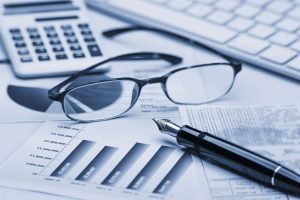
As sales price, less cost of sales is the gross profit margin of the organization. Hence, some organizations do not take the average sales while calculating this period to determine the exact conversion period. In comparison, it is also a fact that the analyst calculates this period by considering sales. It is because it helps period costs readers of financial statements to understand better.

Period costs affect Operating Expenses, impacting overall profitability on the Income statement.
Usually, fixed costs consist of fixed production overheads and administrative expenses. Although the per-unit cost may vary for these costs, the total expense remains the same. Identifying product costs and differentiating them from period costs net sales is crucial. For costing techniques, such as marginal and absorption costing, both these costs are critical.

Why is calculating manufacturing cost important?
- By managing period costs effectively, you can ensure that your business is more profitable, as you’re not overspending on non-production activities.
- ✝ To check the rates and terms you may qualify for, SoFi conducts a soft credit pull that will not affect your credit score.
- The costs are not related to the production of inventory and are therefore expensed in the period incurred.
- Direct Materials are the raw materials used in the production of goods.
- Calculating Cost of Goods Sold (COGS) accurately is vital for profitability analysis but can become difficult when managing fluctuating costs and large inventories.
The amount of these resources can be easily counted or kept as a record. However, manufacturing a car also requires lubricants like oils and grease. Still, it is very difficult or insignificant to trace the low value of grease used in a particular vehicle hence referred to as indirect costs. Moreover, when the costs Catch Up Bookkeeping related to production are clearly known, it helps businesses to price their products properly, ensuring the businesses do not incur losses.
- Operating costs are calculated by adding the cost of goods sold (COGS) and other operating expenses.
- For example, the salary of a chief financial officer or the upkeep of corporate headquarters falls under this category.
- The inventory conversion period refers to the time needed to get materials, manufacture, and sell the product.
- When preparing a budget, companies must estimate not only the variable costs that fluctuate with production levels but also the fixed period costs that remain constant regardless of output.
- From administrative and selling expenses to marketing costs and depreciation, every Period Cost plays a role in shaping a company’s financial health.
- Sourcetable, an AI-powered spreadsheet, revolutionizes how businesses handle calculations.
Fixed costs

Looking to streamline your business financial modeling process with a prebuilt customizable template? Say goodbye to the hassle of building a financial model from scratch and get started right away with one of our premium templates. While this measure relates to the cost of a project, the corresponding indicator for the project schedule is the schedule variance (SV). Variations of these measures are the schedule performance index and the cost performance index – you will find more details on these indexes in this article.

Variable period costs can be more challenging to predict and manage than fixed costs since they are directly tied to production levels. Effective inventory management and production planning can help mitigate the impact of variable costs on profitability. Direct costs include the costs of goods sold (COGS) while indirect costs include SG&A expenses. SG&A can include overhead costs such as payroll, rent, maintenance, insurance, or raw materials.
- For companies attempting to increase their gross margins, selling at higher quantities is one method to benefit from lower per-unit costs.
- This calculator streamlines the process of computing the Total Period Cost, making it an accessible tool for business owners, financial analysts, and academic use.
- The choice of depreciation method depends on factors such as asset usage patterns, expected future cash flows, and accounting policies.
- This comprehensive budgeting ensures that all aspects of the company’s financial obligations are anticipated and accounted for, allowing for a more robust financial plan.
- In addition to categorizing costs as manufacturing and nonmanufacturing, they can also be categorized as either product costs or period costs.
